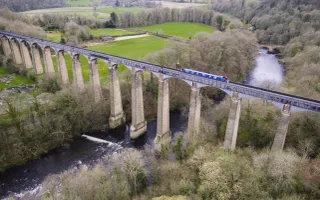Alongside growth in income from other commercial and fundraising activities, the changes will help support the long-term future of the 2,000 miles of waterways that we manage across England & Wales.
We have announced that boat licence fees will need to rise above the baseline inflation rate for each of the next five years. In addition, we're announcing the introduction of a surcharge for boats that continuously cruise and an increase in the surcharges for wide-beam boats to reflect the greater utility they receive.
Daunting challenges
Richard Parry, chief executive at Canal & River Trust, said: “Our canals are facing some daunting challenges and, if we don't act now, the future could look bleak. The government recently announced significant cuts to public funding for the canals over the years ahead, whilst high inflation rates and the ageing infrastructure has seen the cost of caring for canals rise.
“We're re-doubling our efforts to grow volunteering further and to increase funds raised across all our activities, from all our users and supporters, so we can deliver the additional ongoing investment that the network needs. The boat licence fee represents around 11% of income, going towards vital maintenance and repairs. Whilst the scale of the investment required is in no way to be borne by boaters alone, the increases from boat licences will make an important contribution.”
Alongside the changes to boat licensing, we continue to grow income from our property and non-property endowment, and from other commercial sources such as hosting utilities and water transfer, which together contribute over 40% of our income. We are targeting a step-change in income generation from towpath users and other supporters, with fundraising income projected to grow by 10% each year – whilst other commercial waterways income, including from anglers, paddle sports and moorings, is also set to increase.
When will this happen?
The above-inflation increases for all boat licence holders, and the new surcharges, will take effect from April 2024. Details will be announced in November using the latest inflation forecasts.
Boat use has changed over the years, with rising numbers of people choosing to continuously cruise, and to choose wider boats. Most boaters without home moorings spend more time on the waterway network and make more use of facilities, than those with a home mooring. Wider boats take up more space on the water than their narrow beam counterparts. We believe that reflecting the utility people get from their use of the waterways network, and the cost of supporting different boat use, is the fairest way to decide licence pricing – as reflected in the responses from the recent boater consultation.
We have also considered whether the various licence discounts currently offered are sustainable. From 1 April 2024, there will be a reduction in the discounts for prompt payment and for paying online as this has become the standard method used by the vast majority of boaters. The electric boat, historic boat and charity boat discounts will be retained.
Controlling our costs
Richard Parry continues: “We will continue to control our costs as far as possible given external pressures while focusing our resources on the priority maintenance and repairs that are required to support safe navigation, and we will continue to lobby the government to rethink their short-sighted decision on our future funding.
“I recognise that these changes to licence pricing will not be popular with everyone, but the income we receive from boat licences is more critical than ever. The cost of the licence has largely kept pace with inflation since the Trust was formed and now, together with increases in income from all possible sources, we must raise the resources needed to keep the network alive for future generations, averting a return to the decline of the mid-20th century when canals fell into disrepair in the face of insufficient funding.”
For more information on boat licensing, visit: Licence your boat.






